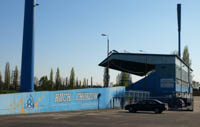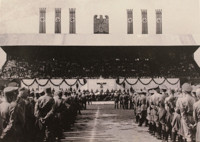Stadion Ruchu Chorzów – until 2025
| Capacity | 9 300 |
|---|---|
| 1,040 (Covered seats) | |
| Country | Poland |
| City | Chorzów |
| Clubs | Ruch Chorzów SSA |
| Retire year | 2025 |
| Nicknames | Cicha Stadium |
| Floodlights | 1,760 lux |
| Inauguration | 29/09/1935 (Ruch Chorzów – Warta Poznań 1–1) |
| Renovations | 1945–1948, 1961 |
| Cost | PLN 180,000 ($34,000) |
| Design | Eng. Nowak |
| Address | ul. Cicha 6, 41-506 Chorzów |
Advertisement
Stadion Ruchu Chorzów – historical stadium description
What is a short summary of Ruch Chorzów’s stadium?
The decision to build a new stadium for Ruch Chorzów (known as Ruch Wielkie Hajduki until 1939) was made shortly after the club won its first Polish championship in the 1933 season.
Construction began on July 1, 1934, and the new venue was opened on September 29, 1935. The main event during the inauguration was a league match between Ruch and Warta Poznań (1–1), preceded by the dropping of a ball onto the pitch from an airplane.
A characteristic feature of the facility was the steel main stand, which was included in the plans rather by accident. The stand was completed only a year and a half after the stadium opened. Its roof had no internal supports that would obstruct visibility, and the entire structure was considered the most modern in the country at the time.
One of the symbols of the stadium was also the Omega clock, which Ruch received from the Swiss company for winning a poll organized by the weekly magazine “Raz, Dwa, Trzy”. Another recognizable feature were the “świeczki” (“candles”), as the distinctive lighting masts were called.
The stadium primarily served Ruch Chorzów, who celebrated numerous successes there and won most of their 14 Polish championship titles at this ground, thanks to which it is considered one of the best football teams in the country.
The facility has witnessed many extraordinary events. The legendary Ernest Wilimowski scored 10 goals in a single match here – a record that remains unmatched in Poland’s top division (Ekstraklasa) to this day. Janusz Jojko's own goal – among the most bizarre in Polish football history – was also recorded as a memorable moment.
During World War II, when Upper Silesia was part of Germany, the stadium hosted a large Nazi propaganda rally. In 1945, the Red Army entered the region and subsequently used the stadium as a military base. In 1948, the Polish national team played at Cicha Street – for the only time in its history. The post-war history of the stadium was also marked by riots involving fans.
In the 21st century, there was increasing talk of the need to build a new stadium for Ruch. After years of efforts and unfulfilled election promises, it was not until the end of December 2024 that the City Council approved a budget that allowed the investment to begin – with the demolition of the old stadium, as the new facility is to be built in its place.
In mid-2025, the first demolition work began – the dismantling of the main stand. On June 28, 2025, nearly 90 years after its opening, an official farewell to the old stadium was organized. The main event of the ceremony, as during the inauguration, was a match between Ruch and Warta Poznań.
How was the Ruch Chorzów stadium built?
What were the beginnings of Ruch Chorzów?
Ruch Chorzów was founded on April 20, 1920, as a Polish club in what was then German Bismarckhütte, which was only incorporated into Poland in 1922, following the division of Upper Silesia after the Silesian Uprisings and the plebiscite.
In 1923, the municipality adopted the Polish name Wielkie Hajduki. It was incorporated into the administrative boundaries of Chorzów only in April 1939 as its southern district, named Chorzów-Batory. Therefore, the club was known for most of the interwar period as Ruch Wielkie Hajduki.
Where did Ruch Chorzów initially play its matches?
The new team initially played its matches on the market square between today's Farna and Wrocławska streets. The team also used the “na Kalinie” pitch, which belonged to the German Bismarckhütter Ballspiel Club.
After the division of Upper Silesia, German clubs were unwelcome in the Polish Voivodeship of Silesia, so some of them decided to merge with Polish teams. This was the case with the Bismarckhütter Ballspiel Club, which joined Ruch in 1923. In this way, Ruch also took over the pitch “na Kalinie”.
In 1927, Ruch became one of the 14 founders of the Polish League, today's Ekstraklasa. Because the undersized pitch “na Kalinie”, with a surface of cinders and ash (the facility was popularly known as “hasiok”), was not approved for the new competition, the club had to play its matches at the facilities of 1. FC Katowice, Pogoń Katowice, and AKS Królewska Huta.
The modernization of the “na Kalinie” facility at the turn of 1929 and 1930 allowed the club to return to its own pitch. However, the stadium still did not meet expectations, so after the first Polish championship in the 1933 season, a decision was made to build a new, proper stadium.
When was the Ruch Chorzów stadium built?
Ruch secured its historic title on November 12, 1933, and in December 1933, the Wielkie Hajduki municipal council donated land for the construction of the stadium. The facility was to be built on what was then Królewsko-Hucka Street (now Aleja Bojowników o Wolność i Demokrację), not far from a tram stop and a railway station.
The construction costs, which ultimately amounted to approximately PLN 180,000, were shared by: the municipality of Wielkie Hajduki (PLN 61,000), the Labor Fund (PLN 52,000), Ruch (PLN 50,000), the Tychy Brewery (PLN 15,000), and the Silesian Tramway Authority (PLN 1,000). In addition, the Solvay cement factory in Grodziec donated 500 bags of cement.
The construction of the stadium, according to a design by engineer Nowak, began on July 1, 1934. Mr. Ociepka was the construction manager, and at its peak, 200 workers were employed on the site. While the work was underway, Ruch won its second Polish championship in the 1934 season.
When was the Ruch Chorzów stadium inaugurated?
The grand opening of the new stadium took place on September 29, 1935. The inauguration was combined with the celebration of the club's 15th anniversary. The ribbon was cut by the Voivode (Governor) of the Silesian Voivodeship Michał Grażyński, and the facility was consecrated by the parish priest from Wielkie Hajduki, Józef Czempiel.
Many attractions were planned for the inauguration, and the main event was a league match between Ruch and Warta Poznań. The match was attended by approximately 25,000 spectators, and before it began, the Silesian Aeroclub dropped a ball onto the pitch from an airplane.
The first goal was scored by the visitors at the very beginning of the match by Fryderyk Scherfke, who later would score the first goal in history for Poland at the World Cup. After about 20 minutes, Edmund Malcherek equalized. The score remained unchanged, and the match ended in a 1–1 draw.
Was the Ruch Chorzów stadium named after Michał Grażyński?
One of the surviving photographs from the opening day shows a large sign indicating that the new facility was named after Michał Grażyński, the Voivode (Governor) of the Silesian Voivodeship, who performed the ceremonial ribbon cutting (Stadjon K.S. “Ruch” im. dr Michała Grażyńskiego). However, according to historians, no documents have survived to prove that the stadium actually bore this name.
What did the Ruch Chorzów stadium look like after its opening?
The new stadium had a 500-meter running track that was 15 meters wide, which was to be used not only by athletes, but also by cyclists and motorcyclists, and in winter it was to be converted into an ice rink. The running track was surrounded by 9-meter-high earth embankments with stands, and the capacity of the facility was initially estimated at 40-50 thousand spectators.
The main stand on the west side had a completely different, innovative for its time, steel structure. The stand was purchased at a bargain during the Poznań International Fair – it was originally ordered by the Great Poland Horse Racing Society, which wanted to install it at the race track in Brynów, but due to financial difficulties, it was unable to collect it.
The stand was designed by engineer Dic and built at the Piłsudski Steelworks in Chorzów. On the day the stadium opened, only the structural framework was ready – it was completed a year and a half later, in early 1937. Its “debut” took place only on August 1, 1937, during a league match against AKS Chorzów (0–0).
How did the Ruch Chorzów stadium change?
Repair of the stadium after the war
After the Soviets entered Chorzów at the end of January 1945, the stadium was taken over by the Red Army, which was stationed there until November 30, 1945. The soldiers left the facility in poor condition: the embankments around the pitch were trampled and the turf was dug up.
Repairing the damage took until 1948, when the first league games resumed in Poland. The first post-war league match took place at the stadium on March 14, 1948 (Ruch Chorzów – Garbarnia Kraków 1–0). After reconstruction, the stadium's capacity was only half of what it had been before the war, approx. 20,000 spectators.
In 1961, the stadium underwent a general renovation, and its capacity increased to 41,000 spectators.
Artificial lighting
In 1968, the stadium was equipped with artificial lighting. The design was prepared by Biprostal from Kraków, and the construction and installation of the masts was carried out by Hutnicze Przedsiębiorstwo Remontowe from Katowice. The installation of the masts began in April 1968, and the first lighting test was carried out on September 1, 1968.
The first match under artificial lighting was played on October 31, 1968 (a friendly match against Urania Kochłowice, won by Ruch 3–0). The first league match with the floodlights on took place on June 4, 1969 (2–1 against Odra Opole).
Modernizations at the turn of the 20th and 21st centuries
During a match against Widzew Łódź on May 22, 1993, the club received information about a bomb threat. The information was false, but an inspection revealed a number of safety deficiencies. As a result, renovations were carried out, during which the first seats were installed in the main stand – interestingly, they were apparently intended for trams.
Between 2002 and 2007, seats were also installed in the other stands, reducing the stadium's capacity to less than 10,000 spectators. In 2007, a modern monitoring system was installed at the stadium, and in 2009, the pitch was equipped with under-soil heating.
What is the history of the Omega clock at the Ruch Chorzów stadium?
How did Omega end up at the Ruch stadium?
One of the symbols of the stadium, with its own history, was the Omega clock. The installation of the clock was planned at the Ruch stadium as early as 1935 – it was reportedly funded by the Katowice-based jewelry company Juvelia, but ultimately the stadium was built without a clock.
The clock was brought to Chorzów in 1939, under completely different circumstances – as a prize for Ruch's victory in a poll conducted by the magazine “Raz, Dwa, Trzy” for the most popular Polish club. The competition was organized by the Swiss company Omega, which had previously gifted Polish clubs with clocks in similar polls.
How did Omega's “debut” go?
The new clock, worth about PLN 4,000, was placed opposite the main stand. The first match with it took place on May 21, 1939. Omega “helped” the hosts, who defeated Union-Touring Łódź 12–1. Ernest Wilimowski scored 10 goals in that match, which is still a record in the Ekstraklasa.
How did Omega survive World War II?
Omega's keeper was watchmaker Augustyn Ferda, who, after the outbreak of World War II, hid the clock mechanism from the Germans by storing it in the basement of his apartment, under a pile of coal. The mechanism survived the war in this way and continued to serve at the stadium after its end.
What happened to Omega next?
Because the bright sun made it difficult to read the clock, after some time it was moved to the north curve. In 1979, an electronic board by Elektromontaż was installed on the opposite, southern curve. For a short time, both clocks operated simultaneously, but then Omega was taken out of service (although the structure was left in place).
However, the new electronic display quickly began to malfunction due to moisture. Before the club's 75th anniversary celebrations in 1995, it was not possible to restore it to working order, so on the initiative of Jerzy Małyska (Augustyn Ferda's son-in-law), the old Omega was renovated and restarted.
Since Omega was located in the visitors' section, it was often the target of attacks by visiting fans. The most serious incident took place on May 9, 1998, when Wisła Kraków hooligans caused riots at the stadium, attacking the clock and Grzegorz Małyska, who operated it. Małyska ended up in the hospital after the match.
The faulty “Elektromontaż” was dismantled in 2005. The old Omega operated until 2009 – then the dial was replaced with a new electronic chronometer, and electronic boards for displaying the score and additional messages were also installed next to it.
What were Omega's last years at the Ruch stadium like?
Grzegorz Małyska and his family continued to maintain the old Omega. In 2015, on the 80th anniversary of the stadium, it was decided to restore the characteristic clock to the Ruch facility. Initially, it was set up for only one match, against Legia Warsaw, played on September 20, 2015, when it was temporarily placed on the south curve.
The Omega was permanently restored at the beginning of the 2016/17 season. The clock was placed opposite the main stand, where it had been at the very beginning. The electronic clock on the north curve also continued to operate – both remained in place until the stadium was closed.
What did the Ruch Chorzów stadium look like at the end of its operation?
Over the years, the facility has not changed its oval shape significantly, and the main stand has also survived to the end. The stadium used to have an athletics track, but it disappeared in the 1970s, and the entire area inside the stands was covered with grass. The pitch has been equipped with under-soil heating since 2009.
The stadium's capacity once exceeded 40,000 spectators, but after the installation of plastic seats in all stands, it fell below 10,000 – at the end of its operation, it was reported that the stadium could accommodate 9,300 people.
What did the main stand at the Ruch Chorzów stadium look like?
The main stand occupied the central part of the western side of the stadium. It had a steel structure and was the only one with a roof. When it was built, it was considered the most modern in Poland – the lack of roof supports, which could limit visibility, was particularly appreciated. Inside the stand, there were changing rooms and club premises.
What kind of lighting was installed at the Ruch Chorzów stadium?
From 1968, the stadium was equipped with artificial lighting. It consisted of four 48-meter-high masts with a circular cross-section, topped with slender heads with floodlights. Their distinctive appearance led to them being popularly known as “świeczki” (“candles”).
The then president of Ruch, Ryszard Trzcionka, played a major role in the creation of the lighting. The distinctive “candles” were inspired by the masts at the stadium in Linz, Austria.
The lighting intensity was initially 400 lux. In 1998, the “candles” were modernized and the intensity increased to 1625 lux. Further work led to a level of 1760 lux being achieved.
The masts were dismantled in 2023 after a crack was found in one of them – although initially it was planned to replace them with new ones, this situation proved to be only an additional impulse for the decision to demolish the entire stadium.
Where was the Ruch Chorzów stadium located?
The Ruch Chorzów stadium was located in the Chorzów-Batory district (before the war, it was an independent municipality called Wielkie Hajduki). Next to it was the Chorzów Racławicka tram stop, and the largest railway station in the city, Chorzów Batory, was also very close by.
Behind the main stand, along Cicha Street (which had been the stadium's official address since the 1980s), there was a training field. Another training field, known as “Kresy”, was located a little further west, behind Dąbrowskiego Street.
Just behind the northern curve of the stadium ran the Drogowa Trasa Średnicowa (DTŚ) expressway – the section located directly next to the stadium was built at the turn of the 20th and 21st centuries. Two footbridges were built near the stadium over the DTŚ.
A short distance south of the stadium, behind the railway tracks, there was a large industrial plant – the Batory Steelworks. Closer to the stadium itself, in the vicinity of the southern curve, there were two cooling towers of the steelworks, which were a characteristic feature of the stadium's surroundings.
Who was the owner of the Ruch Chorzów stadium?
The stadium was owned by the city. From January 1, 2005, it was managed by the Municipal Recreation and Sports Center in Chorzów, and on July 1, 2023, as part of preparations for the construction of a new facility, management of the stadium was transferred to the municipal company ADM Serwis.
What events took place at the Ruch Chorzów stadium?
How did the hosts of the stadium on Cicha Street fare?
What results did Ruch Wielkie Hajduki/Chorzów achieve at the new stadium before the outbreak of World War II?
In the 1935 season, which Ruch finished at the new stadium, the team won the Polish championship, as it had in the previous two years. Before World War II, Ruch triumphed in the league again in 1936 and 1938.
In the 1939 season, it also led the table, but the competition was interrupted due to the outbreak of war. With five national championships, Ruch was then the most successful football club in Poland.
At that time, Ruch was represented by Ernest Wilimowski, considered the best Polish footballer of the interwar period, as well as Teodor Peterek, Gerard Wodarz, and Walter Brom, the youngest goalkeeper in history to be called up for the World Cup (although he did not play in it).
Bismarckhütter SV 99
After the outbreak of World War II, Upper Silesia was incorporated into the Third Reich. The Germans dissolved Ruch and restored the former Bismarckhütter Ballspiel Club in its place, whose name was soon changed to Bismarckhütter SV 99. Some of Ruch's pre-war players continued to play for the team.
From 1941 until the end of the war, the team competed in the Gauliga Oberschlesien, one of many regional leagues in Germany, whose winners participated in the national championships at the end of each season.
In the 1941/42 season, Bismarckhütter SV 99 finished second in its Gauliga, fourth a year later, and third in the 1943/44 season (the 1944/45 season was not completed).
End of the war
At the end of January 1945, the Red Army entered Chorzów. After just one month, steps were taken to reactivate Ruch. The “Niebiescy” (“Blue”) team played their first post-war match on March 15 against AKS Chorzów (2–2).
The match, like the later matches against Wisła Kraków and Polonia Bytom, organized as part of the club's 25th anniversary celebrations, took place on a training ground located a short distance to the west (known as “Kresy”), because until November 30, 1945, the Red Army was stationed at Ruch's stadium.
The new authorities initially handed the stadium over to the RKS Batory club, and Ruch had to fight for its return.
How did Ruch Chorzów fare after World War II?
After the war, Ruch (for a time under the name Unia) became Polish champions nine more times – in 1951, 1952, 1953, 1960, 1968, 1974, 1975, 1979, and 1989. Together with its pre-war titles, this gives it 14 championships, which to this day places the team among the most successful football clubs in Poland.
While playing at the stadium on Cicha Street, Ruch also won the Polish Cup three times (1951, 1974, and 1996) and was a quarterfinalist in the UEFA Cup (1973/1974) and the European Cup (1974/1975).
Gerard Cieślik, who spent his entire football career at the club, was a legend of post-war Ruch. The player scored 167 goals in 237 league matches. In 27 appearances for the Polish national team, he made his mark as the hero of the 2–1 victory over the USSR in 1957, in which he scored both goals for Poland.
After the war, Ruch was also represented by such figures as Antoni Piechniczek, Zygmunt Maszczyk, Bronisław Bula, Waldemar Fornalik, and Krzysztof Warzycha.
The last years of the stadium on Cicha Street were a period of significant fluctuations in Ruch's form. The club, which had never been relegated from the first division until 1987, found itself at the lowest level in its history, the fourth division, just before its centenary celebrations in 2020, after a series of three consecutive relegations between 2017 and 2019.
However, between 2021 and 2023, Ruch recorded three consecutive promotions, returning to the Ekstraklasa (where, due to the dismantling of the stadium lighting, it could no longer play at its own facility).
What special events took place at the stadium on Cicha Street?
Matches of the (unofficial) Polish Upper Silesia national team
In the interwar period, a team representing the Polish part of Upper Silesia played at the stadium, which included many Ruch players.
Although none of the most prestigious matches between this team and the German Upper Silesia national team took place in Wielkie Hajduki, several other matches were played at the Ruch stadium, including against the Basque Country (June 9, 1937, 3–4 defeat), Upper Austria (September 12, 1937, 7–2 win) and Wolverhampton Wanderers (May 19, 1938, 4–4 draw).
10 goals by Ernest Wilimowski
On May 21, 1939, Ruch defeated Union-Touring Łódź 12–1 in a league match (during this match, the new Omega clock also made its “debut” at the Ruch stadium). The famous “Ezi”, Ernest Wilimowski, shone in the match, scoring 10 goals, which is still an unbeaten record in the Ekstraklasa.
By halftime, “Ezi” had scored a hat trick, and in the second half he added seven more goals, ending the match with a historic achievement. Teodor Peterek also scored two goals, and Eugeniusz Świętosławski scored the visitors' consolation goal from a penalty kick.
Due to terrible weather, only 2,000 spectators came to watch the match against the newcomers to the First League. According to an unconfirmed but widely repeated legend, Wilimowski bet one of the fans a gold watch at half-time that he would score 10 goals.
Tag der Volksgemeinschaft
On September 6, 1942, the stadium was the site of a large Nazi demonstration called Tag der Volksgemeinschaft (National Community Day). According to various accounts, between 35,000 and 50,000 people participated in the event.
It was part of a propaganda campaign aimed at the inhabitants of industrial Upper Silesia, whose goal was to strengthen German identity, morale, and loyalty to the Third Reich, especially in the face of the first setbacks on the Eastern Front.
One of the main officials participating in the event was the head of the NSDAP party organization (Reichsorganisationsleiter) and leader of the German Labor Front (Deutsche Arbeitsfront), Dr. Robert Ley. The entire stadium was decorated with Third Reich flags for the occasion, and a large eagle with a swastika was placed on the roof of the main stand.
Polish national team
The Polish national team played only one official match at the Ruch Chorzów stadium. It took place shortly after the end of World War II, on October 10, 1948. The opponent was Romania, and the match, which ended in a 0–0 draw, was played as part of the (later unfinished) Balkan Cup tournament.
After the opening of the Silesian Stadium (built between 1951 and 1956), the national team played regularly in Chorzów, although no longer at the Ruch stadium. However, the facility on Cicha Street was sometimes used as a training ground for teams playing at Stadion Śląski.
The Ruch stadium also hosted unofficial matches of the Polish national team – against club teams or the Silesian national team.
The Great Silesian Derby
One of the most prestigious and fierce rivalries in Polish club football is the so-called Wielkie Derby Śląska (Great Silesian Derby), i.e. matches between Górnik Zabrze and Ruch Chorzów, the two most successful teams from Upper Silesia.
Ruch and Górnik have the largest fan bases in Upper Silesia, and their fan clubs are present throughout the region. Many editions of the Great Silesian Derby took place at the stadium on Cicha Street, although Ruch also moved some of its home matches to the Silesian Stadium.
In the interwar period and shortly after the war, matches between Ruch and AKS Chorzów were more important, and in the first post-war years, matches against Polonia Bytom were also significant.
European cups
The stadium also witnessed Ruch Chorzów's matches in European cups. The club achieved its best results on the international stage in the 1970s, when it reached the quarter-finals of the UEFA Cup (1973/74) and the European Cup (1974/75).
At that time, fierce battles with Feyenoord and AS Saint-Étienne were fought at the Ruch stadium. Later, teams such as PSV Eindhoven, Benfica, and Bologna FC (in the 1998 Intertoto Cup final) also came to Cicha Street.
Some of Ruch's European matches were played at the Silesian Stadium, e.g. the match against Inter Milan in 2000. The Europa League qualifying matches, played at the beginning of the 2014/15 season, were moved to the Piast Gliwice stadium due to turf disease at Cicha Street.
Janusz Jojko's own goal
Sometimes bizarre situations occurred at the stadium. One of the most memorable was the own goal by goalkeeper Janusz Jojko in a match against Lechia Gdańsk on June 28, 1987. It was probably the most famous own goal in the history of Polish football.
In the (as it turned out, unlucky) 13th minute of the match, in a seemingly harmless situation, Janusz Jojko threw the ball out of the penalty area. However, he cleared the ball so unfortunately that... he sent it into his own goal, giving the visitors a 1–0 lead (the match was eventually won by Lechia 2–1).
The consequences of the defeat were very serious – it was the first match of the two-leg playoff to remain in the First League. In the rematch in Gdańsk three days later, Lechia won again 2–1. Thus, Ruch, the last club to participate in all seasons of the First League since its inception, was relegated for the first time in its history.
After the match, accusations of corruption naturally arose, although the player did not admit to anything, nor was anything proven against him. Jojko played the entire match to the end, but it was his last appearance for Ruch. From the new season, he continued his career quite successfully at GKS Katowice.
Riots involving fans
On May 3, 2004, during a match against ŁKS, serious riots broke out, considered one of the largest in the history of Polish stadiums. During the break, about 500 visiting fans were attacked by Ruch fans, which led to clashes lasting an hour, also involving the police. The match was not completed, and the result was verified as a walkover in favor of ŁKS.
There were more fights involving fans at the Ruch stadium. Clashes with the Milicja (state police in communist Poland) occurred on 21 June 1989, when after the match against Górnik Wałbrzych, Ruch celebrated their 14th national title and fans flooded the pitch. Riots also broke out on May 9, 1998, during a league match against Wisła Kraków – this time, the perpetrators were the visiting fans.
How did the demolition of the Ruch Chorzów stadium come about?
Why does Ruch Chorzów need a new stadium?
Despite temporary renovations, in the 21st century the stadium was considered outdated, especially after the so-called “stadium boom” in Poland and the construction of more and more modern football facilities.
There is another large and modern stadium in Chorzów – the Silesian Stadium – which is why there are voices saying that Ruch should play there. Despite Ruch's long tradition and solid fan base, it is too large a facility for everyday use, and the club is unable to fill it regularly; moreover, it is not a football-specific facility – it has an athletics track, which means that the stands are far from the pitch.
When did the first plans for the new Ruch Chorzów stadium appear?
In June 2007, the then mayor of Chorzów, Marek Kopel, presented a concept for a phased reconstruction of the stadium, prepared by architect Janusz Bocianowski, at a meeting with fans. As a result, four new stands with a total capacity of 18,000 spectators were to be built. The cost of the reconstruction was estimated at PLN 50-80 million.
However, that project was not implemented, although it was even mentioned in the context of Euro 2012 as a backup for the Silesian Stadium if it were to host the matches of the tournament.
The new mayor, Andrzej Kotala, elected in 2010, also promised to rebuild the stadium. Although a new design for the Ruch stadium was selected in an international competition in 2013, the vision failed to be implemented in the following years.
Kotala became famous for his (unfulfilled) stadium promises, which were one of the key points of his subsequent election campaigns (he was re-elected in 2014 and 2018 and will remain in office until 2024).
How did the election of a new mayor in 2024 affect the issue of a new stadium for Ruch Chorzów?
In 2024, Szymon Michałek, a social activist associated with the Ruch Chorzów fan community, became the new mayor. He is a strong supporter of the construction of a new stadium and, since taking office, has taken steps towards its creation.
The new mayor also decided that the 2013 design, which assumed a capacity of 12-16 thousand people, was not ambitious enough for a stadium for one of the most successful clubs in Poland, with a large fan base throughout Upper Silesia. In his opinion, the new facility should accommodate approximately 22,000 spectators and refer to the club's rich traditions, among other things, through a museum located there.
How did the dismantling of the lighting masts affect the new stadium for Ruch Chorzów?
At the beginning of 2023, inspectors noticed cracks in the base of one of the lighting masts (the one standing furthest north). Due to the scale of the threat, the entire stadium was ordered to be closed.
The damaged mast was dismantled at the end of January 2023. The remaining masts were also removed at the beginning of April 2023. Initially, the city planned to install new lighting, but it was ultimately decided that it would be better to allocate these funds to the construction of a new facility.
Without lighting, the stadium did not meet licensing requirements, so Ruch first moved to the Piast Gliwice facility and then, in October 2023, to the Silesian Stadium (the facility on Cicha Street was still used, among others, by the club's reserves and for training purposes).
The last match for Ruch's first team at Cicha Street (as part of the 1 Liga competition) turned out to be the match against GKS Katowice, played on October 29, 2022 (1–0).
The failure and removal of the masts were factors that further accelerated the decision to demolish and build a new stadium.
When was the decision made to build a new stadium for Ruch Chorzów and demolish the old facility?
On December 17, 2024, the City Council adopted the budget for 2025, which allocated over PLN 36.2 million for work related to the construction of a new stadium for Ruch. This amount was to be sufficient for the demolition of the old stadium and the preparation of design documentation, and possibly also for the commencement of preliminary construction work.
According to the long-term financial forecast, a total of over PLN 408 million is to be allocated from the city budget for the construction of the stadium by 2040. This would allow the city to bear the cost of the investment even in the absence of external funding.
After the budget was approved, on March 28, 2025, a tender was announced for the first stage of demolition of the old stadium, covering the main stand. In June 2025, it was won by Developer i Recykling from Zabrze.
When was the farewell match held at the Ruch Chorzów stadium?
The official farewell to the stadium on Cicha Street took place on June 28, 2025, a few months before the 90th anniversary of its opening. The highlight of the day-long celebrations was a friendly match between Ruch and Warta Poznań, which ended in a goalless draw. The match was attended by 8,000 spectators. The choice of Warta Poznań was not accidental – it was with this rival that Ruch inaugurated the stadium in 1935.
When will the Ruch Chorzów stadium be demolished?
Shortly before the farewell match, the first demolition works began – a section of the roof covering considered a safety hazard was removed. After the official farewell, the dismantling of the roof was completed.
The removal of the remaining elements of the main stand was delayed by an appeal against the tender results and only started in early August 2025. These works are scheduled to be completed in October 2025.
The first stage of demolition, carried out by Developer i Recykling from Zabrze, includes dismantling the main stand and parts of the concrete terraces. The next stage will be handled by the company that wins the contract for the construction of the new stadium.
What will happen to the main stand at Ruch Chorzów’s stadium?
The stadium’s main stand has been listed in the municipal register of monuments, although only the original riveted steel structure is under heritage protection.
The most distinctive historic elements of the stand, as well as the two stadium clocks, will be transferred to the Museum of Metallurgy in Chorzów and to the future Ruch Chorzów Museum, which will be located at the new stadium.
When will the new Ruch Chorzów stadium be built?
There is currently no detailed information about the future Ruch stadium, which is to be built in place of the old facility. Chorzów Mayor Szymon Michałek would like the facility to seat 22,000 spectators and include a club museum.
The city's long-term financial forecast provides for over PLN 408 million for the construction of the new stadium – these funds are to be transferred gradually between 2025 and 2040, and the new facility will probably be built in stages until the end of this period.
The investment could be accelerated by an external subsidy – in October 2023, Prime Minister Mateusz Morawiecki promised to transfer nearly PLN 104 million from central funds for the new Ruch stadium, but after the change of government, the new authorities were not willing to incur such expenses.
Advertisement
Pictures
2025
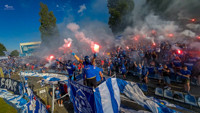
28.06.2025 © @skawindrone 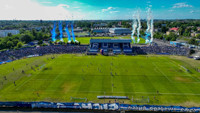
28.06.2025 © @skawindrone 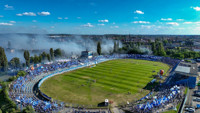
28.06.2025 © @skawindrone 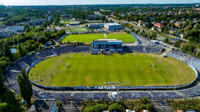
28.06.2025 © @skawindrone 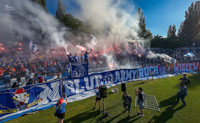
28.06.2025 © @skawindrone 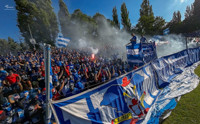
28.06.2025 © @skawindrone 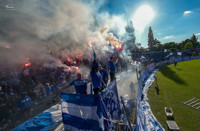
28.06.2025 © @skawindrone
2024
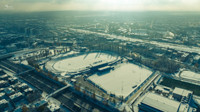
22.11.2024 © @skawindrone
2023
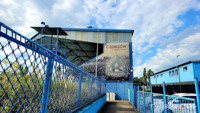
26.08.2023 © Trzi Rogi Elwer 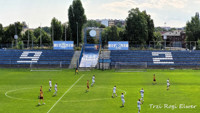
26.08.2023 © Trzi Rogi Elwer 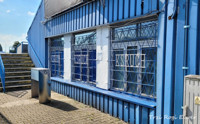
26.08.2023 © Trzi Rogi Elwer 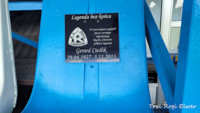
26.08.2023 © Trzi Rogi Elwer
2022
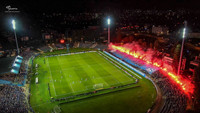
01.09.2022 © @skawindrone 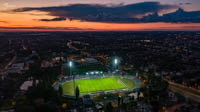
11.08.2022 © @skawindrone 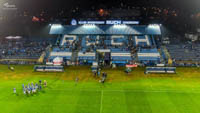
31.07.2022 © @skawindrone 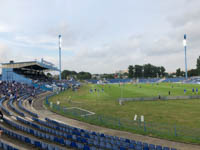
26.07.2022 © Robert Saganowski 
26.07.2022 © Robert Saganowski 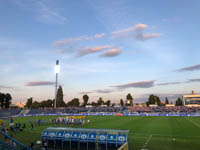
15.07.2022 © Robert Saganowski 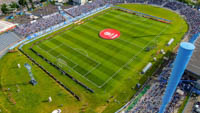
29.05.2022 © @skawindrone 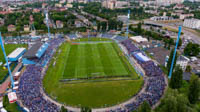
29.05.2022 © @skawindrone 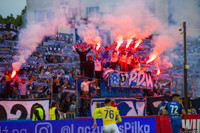
29.05.2022 © RAsenReisen 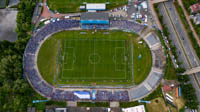
29.05.2022 © @skawindrone 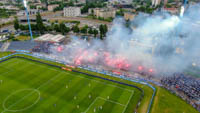
29.05.2022 © @skawindrone 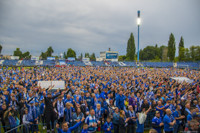
29.05.2022 © RAsenReisen 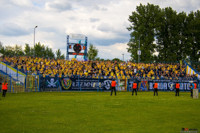
29.05.2022 © RAsenReisen 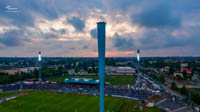
25.05.2022 © @skawindrone 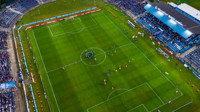
25.05.2022 © @skawindrone 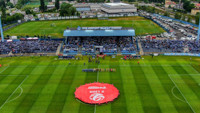
25.05.2022 © @skawindrone 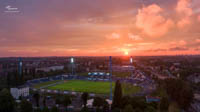
25.05.2022 © @skawindrone 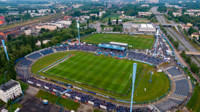
25.05.2022 © @skawindrone 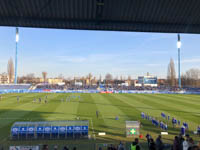
27.03.2022 © Robert Saganowski 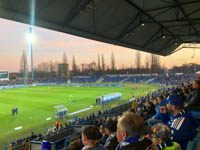
27.03.2022 © Robert Saganowski 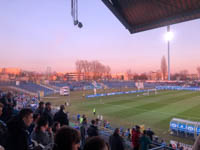
27.03.2022 © Robert Saganowski 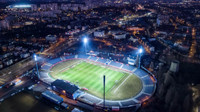
22.03.2022 © @skawindrone 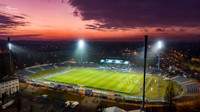
27.02.2022 © @skawindrone
2021
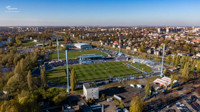
30.10.2021 © @skawindrone 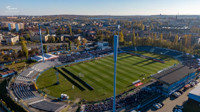
30.10.2021 © @skawindrone 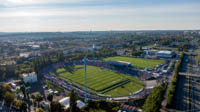
03.10.2021 © @skawindrone 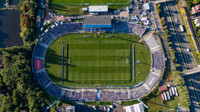
03.10.2021 © @skawindrone 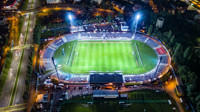
03.09.2021 © @skawindrone 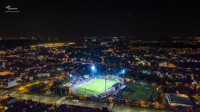
03.09.2021 © @skawindrone 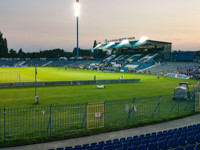
21.08.2021 © Styko Na Stadionach 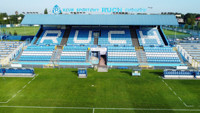
21.08.2021 © Styko Na Stadionach 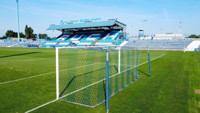
21.08.2021 © Styko Na Stadionach 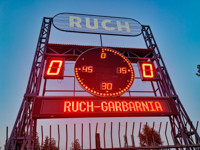
21.08.2021 © Styko Na Stadionach 
21.08.2021 © Styko Na Stadionach 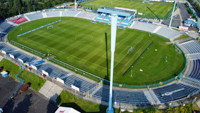
21.08.2021 © Styko Na Stadionach 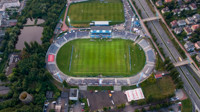
21.08.2021 © @skawindrone 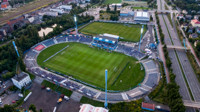
21.08.2021 © @skawindrone 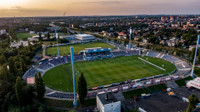
21.08.2021 © @skawindrone 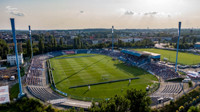
21.08.2021 © @skawindrone 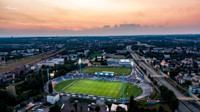
21.08.2021 © @skawindrone 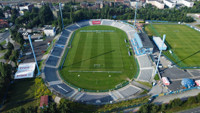
21.08.2021 © Styko Na Stadionach 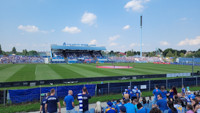
14.08.2021 © Trzi Rogi Elwer 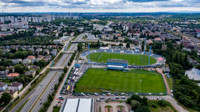
08.08.2021 © @skawindrone 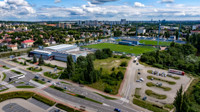
08.08.2021 © @skawindrone 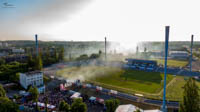
19.06.2021 © @skawindrone 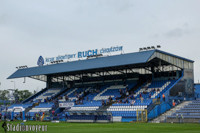
12.06.2021 © Stadionvoyeur 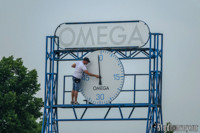
12.06.2021 © Stadionvoyeur 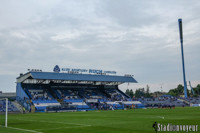
12.06.2021 © Stadionvoyeur
2020
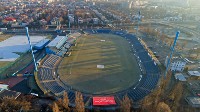
22.02.2020 © Sitikultys.pl 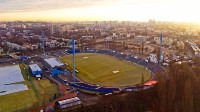
22.02.2020 © Sitikultys.pl 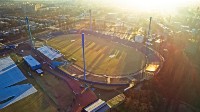
22.02.2020 © Sitikultys.pl
2017
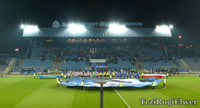
10.02.2017 © Trzi Rogi Elwer 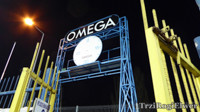
10.02.2017 © Trzi Rogi Elwer
2015
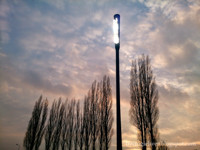
06.03.2015 © Trzi Rogi Elwer 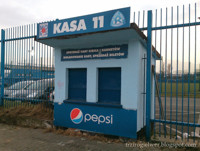
06.03.2015 © Trzi Rogi Elwer 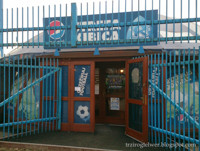
06.03.2015 © Trzi Rogi Elwer 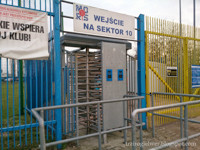
06.03.2015 © Trzi Rogi Elwer 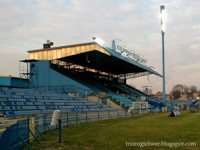
06.03.2015 © Trzi Rogi Elwer 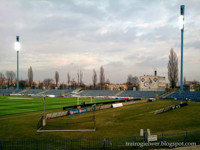
06.03.2015 © Trzi Rogi Elwer
2014
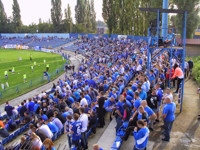
21.09.2014 © Soccerroundtheworld 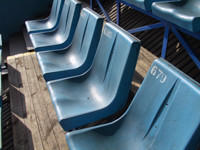
21.09.2014 © Soccerroundtheworld 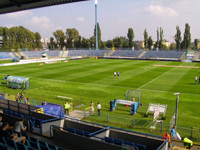
21.09.2014 © Soccerroundtheworld 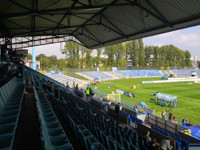
21.09.2014 © Soccerroundtheworld 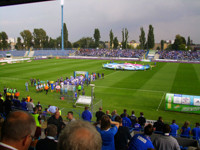
21.09.2014 © Soccerroundtheworld
2011
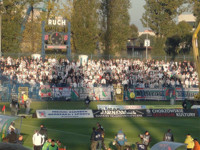
16.10.2011 © brucki.blogspot.com 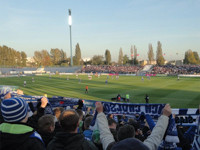
16.10.2011 © brucki.blogspot.com 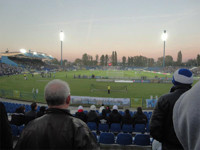
16.10.2011 © brucki.blogspot.com
2009
2007
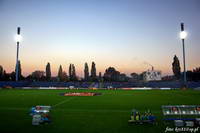
30.09.2007 © Krzysztof 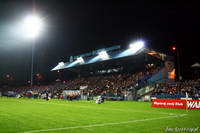
30.09.2007 © Krzysztof 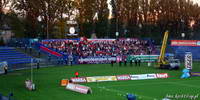
30.09.2007 © Krzysztof 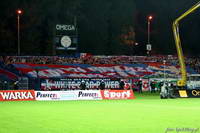
30.09.2007 © Krzysztof 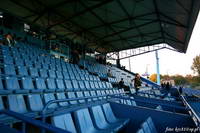
30.09.2007 © Krzysztof 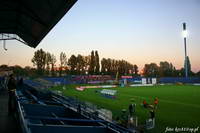
30.09.2007 © Krzysztof 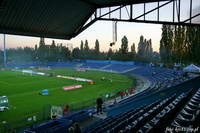
30.09.2007 © Krzysztof 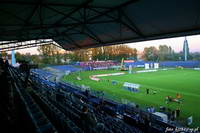
30.09.2007 © Krzysztof 
30.09.2007 © Krzysztof 
30.09.2007 © Krzysztof
2006
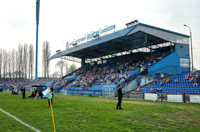
22.04.2006 © Adam Szyszka 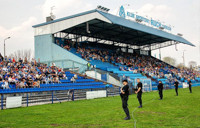
22.04.2006 © Adam Szyszka
2005
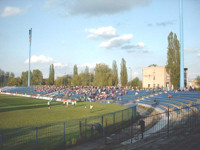
07.05.2005 © Frank Jasperneite 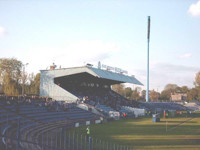
07.05.2005 © Frank Jasperneite 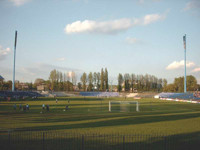
07.05.2005 © Frank Jasperneite
1969
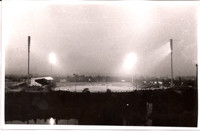
1969 © Ruch Chorzów
1942
1935
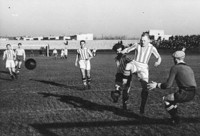
17.11.1935 © Zbiory NAC 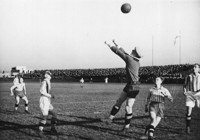
17.11.1935 © Zbiory NAC 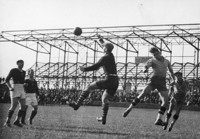
13.10.1935 © Zbiory NAC 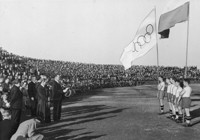
29.09.1935 © Czesław Datka, Ilustrowany Kurier Codzienny 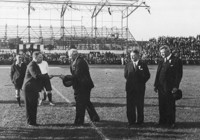
29.09.1935 © Czesław Datka, Ilustrowany Kurier Codzienny 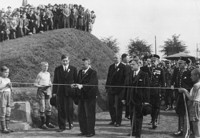
29.09.1935 © Czesław Datka, Ilustrowany Kurier Codzienny 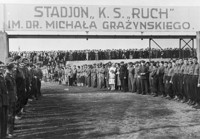
29.09.1935 © Czesław Datka, Ilustrowany Kurier Codzienny 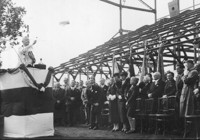
29.09.1935 © Czesław Datka, Ilustrowany Kurier Codzienny 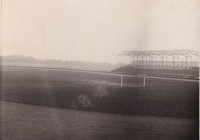
1935 ©
Related news
2024
2019
2017
-

Poland: Safe standing just one step away
After two years we're finally just a step away from safe standing being legal in Poland. Supporters should expect the law to go into effect before year end!
-

Poland: Chorzów back on track with stadium plans
Green light from councilors means the 16,000-capacity stadium plan can go ahead again. City hall expects groundbreaking in a year and delivery in 4 years.
-

Poland: Ruch to get a larger stadium if council agrees
The turbulent tale of Poland's most decorated club may see a happy end. But not just yet. First, the city council needs to approve on pushing their new stadium forward. Decision will be made on Thursday.
2016
2015
-

Poland: Better access to domestic football
President Andrzej Duda signed new legislation regarding stadium safety in Poland. Clubs and league operators are preparing to welcome new fans who may have been discouraged before.
-

Poland: Historic clock to return to Chorzów
Like many great movie scripts, this one includes Nazi occupation, secrecy and devotion. But it’s not about people, rather about a famous stadium clock, which is about to return to Chorzów.
-

Poland: Ekstraklasa season in a nutshell
Hardly the best year in terms of attendance, but Ekstraklasa continues to grow stadium-wise. Thankfully what’s falling most is the number of incidents.
-

Poland: Chorzów stadium goes forward
Earlier today council members voted in support of the city budget. Enough money was secured to launch preparation works on the new Chorzów municipal stadium.
2014
2013
-

Poland: No new stadium for Chorzów, change of plans
Somewhat unexpected decision came from the Chorzów city council vote today, putting the planned new stadium for 14-time Polish champions back on the shelf. Ruch Chorzów will instead move to the 55,000-capacity Stadion Śląski, becoming its anchor tenant.
-

New design: Chorzów Municipal Stadium
Polish Architectural Association presented design competition results for the new stadium of Ruch Chorzów, one of Poland's most famous clubs. Simplicity won over innovation due to budget constraints.
-

Poland: New idea for Chorzów stadium presented
During yesterday's meeting between city and club officials with supporters a new vision for the future Chorzów stadium was presented. One stand after another a new 12,000-16,000 stadium can be built. Groundbreaking could come in a year from now.
-

Poland: Euro 2012 stadiums hardy full
As Polish Ekstraklasa season ended, a sad image of two Euro 2012 stadiums filled in just over 30%, while third one barely made it over 50%. But the situation still seems to be improving overall for Polish football.
-

Poland: League authorities officially request better treatment of fans
In a statement published yesterday, Ekstraklasa SA informs it has officially addressed the parliamentary commission to change current legislation. Entering the stadium is more difficult nowadays than getting on an airplane.
2012
-

Poland: Top clubs support safe standing and legal pyrotechnics
During last meeting of all 16 Ekstraklasa clubs on Monday, officials decided to support safe standing and legal pyrotechnics inside Polish stadiums. This unexpected step comes in response to police offensive after Euro 2012.
-

Poland: New 20,000-seater for Chorzów?
A massive 55,000-seat stadium is still under construction, but municipality declares the will to build a new, much smaller one only for the premier league side Ruch Chorzów.
 StadiumDB
StadiumDB